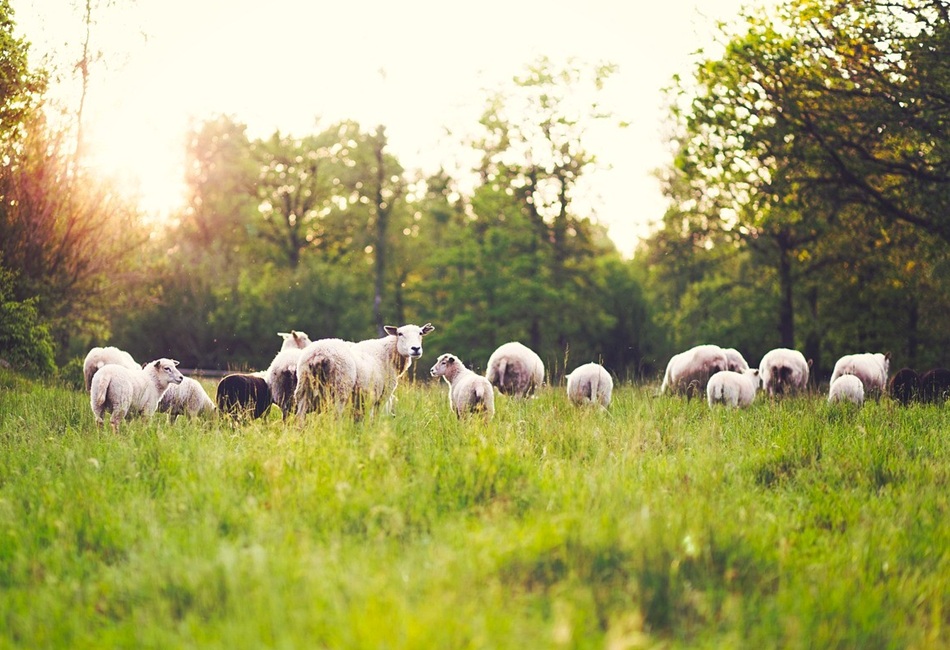How livestock farming and proper land management can help against extreme weather events

This summer, some European farmlands have faced extreme climatic conditions, with devastating effects felt from southern France to Spain, Cyprus, and Greece. Heatwaves and drought have severely tested farms and the land as a whole, hitting both plant and animal production.
The August heatwave had dramatic consequences for European agriculture. In France, for example, thousands ofchickens and other poultry died within just a few days due to excessively high temperatures. The situation was particularly critical in pastures that had been completely scorched by drought, forcing farmers to purchase additional fodder and transport water to ensure the survival of their cattle. The extra costs estimated to cope with this emergency are significant: about €10,000 for fodder and €3,000–4,000 for water supplies.
A striking case is that of the French rural department of Cantal, where the production of the renowned Salers AOP cheese is at risk of halting because cows no longer have grass to graze on. The president of the Salers Cheese Interprofessional Committee, Laurent Lours, commented on how the situation has changed in recent years: “Before, we could be at ease for years; now, it’s almost every summer that we have to face emergencies like this.”
Fragility of rural territories, decisive for environmental disasters
Scholars and analysts agree on a crucial point: decades of rural decline and depopulation have turned many abandoned farmlands and pastures into actual fuel. Dry grass, overgrown vegetation, and unmanaged woodlands have greatly increased the risk of rapid wildfire spread. This demonstrates how the fragility of rural territories is a decisive factor in the severity of environmental disasters.
In the face of such a critical situation, the French government has announced an initial set of emergency measures: extraordinary funds totalling €7–8 million, advances of up to €10,000 per producer, and exemption from land taxes for affected farmers. However, these are limited tools, designed primarily to contain the emergency rather than address the structural roots of the problem.
Producers are not hiding their frustration: they are calling for long-term investments to strengthen the sector’s resilience, from modernising irrigation systems to diversifying crops, and increasing support for climate adaptation. Another crucial point is the official recognition of the specific climatic conditions in each region. This step would enable the activation of more targeted protection measures and dedicated European funds.
Livestock is a valuable natural tool for wildfire prevention
These events clearly show how heatwaves are becoming more frequent and intense, creating a cycle of stress that puts at risk not only crops and livestock, but also entire traditional production chains, such as cheese and fresh fruit. The situation in Cantal, as well as in other French regions and across Europe, is a concrete example of how the vulnerability of the agricultural sector can increase when extreme weather events recur almost annually, without adequate prevention and resilience tools being implemented.
Experts highlight how revitalising local economies could become one of the most effective means of reducing the risk of future wildfires. In particular, the recovery of economic and agricultural activities in rural areas not only creates job opportunities but also has a direct effect on land management. Sustainable forestry, with targeted interventions such as controlled cutting and forest maintenance, helps reduce the amount of dry and flammable vegetation.
At the same time, active agricultural practices such as crop cultivation and livestock grazing play a key role: cattle, sheep, and other farm animals help keep pastures clear of excess dry grass and spontaneous vegetation, consuming material that would otherwise become fuel for wildfires. By reducing the risk of devastating fires caused by combustible material fuels, farms and livestock, beyond ensuring food production, farms and livestock become a valuable natural tool for prevention and land management, thereby lowering the likelihood of fire spread and complementing sustainable forestry practices and rural development.
The European projects PRISMA and BioRural
There are, in fact, innovative European projects such as PRISMA and BioRural, which combine sustainable forest management with local economic development. PRISMA, for example, utilises hyperspectral satellite sensors to monitor forests and biodiversity, enabling targeted interventions in forest management. At the same time, BioRural utilises forest, agroforestry, and livestock residues for energy and bio-based purposes, such as organic fertiliser or biogas production, thereby reducing environmental impact and generating local energy resources within a circular economy framework.
By reducing flammable materials and creating local economic opportunities, the protection and strengthening of livestock farming in areas affected by drought and wildfires is not just an economic issue, but a fundamental strategy to effectively increase the resilience of rural territories and communities.